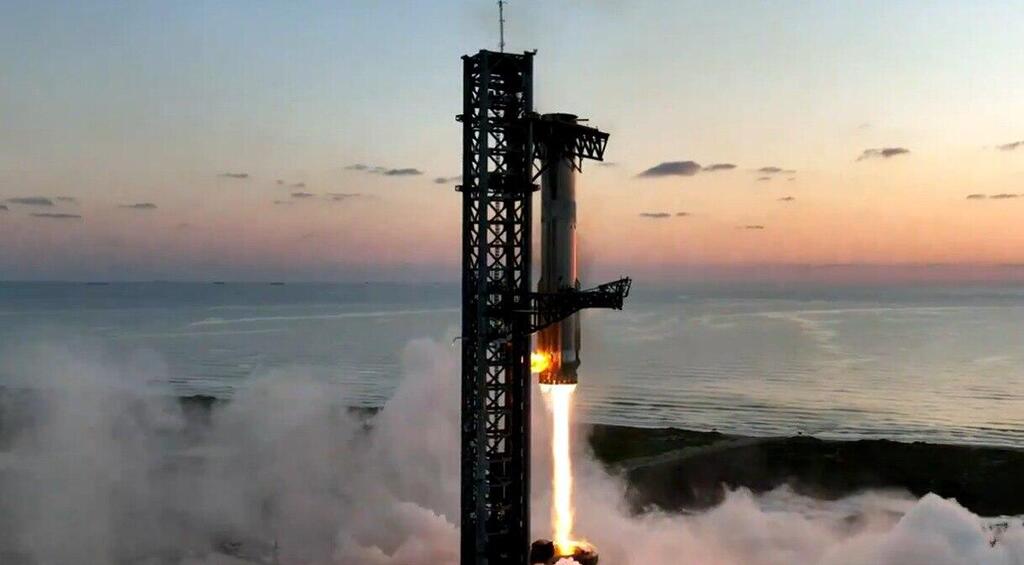Getting your Trinity Audio player ready...
Four months after a previous successful test, SpaceX's Starship spacecraft was relaunched on Sunday this time with its Falcon Super Heavy booster successfully caught and retrieved. "Mechazilla has caught the Super Heavy booster!” the company announced on its X account.
The booster is the central part of the rocket, and the test's objective was to bring it back to the company's launch site in Texas. The massive booster, which is 71 meters long (232 feet), was caught by the launch tower's clamps.
Combined with Starship, the spacecraft itself, the total size of the giant space vehicle is 121 meters (397 feet), with a diameter of 9 meters (30 feet). "We caught the booster!" the company's broadcaster shouted during the live broadcast, to the cheers of the employees. "I'm shaking!" said the second announcer.
The spacecraft itself, which had reached space, managed to return to Earth and perform a landing maneuver over the Indian Ocean after it executed a maneuver even more complex than that of the booster about an hour after the booster landed. Since it returned at a much higher speed, it fell into the ocean waters. "That was amazing!" the announcer said during the live broadcast.
The most challenging part of the return is reentry into the atmosphere and, like the space shuttle, Starship is equipped with heat tiles designed to protect it from extreme temperatures. Back in June, it managed to land on the water for the first time, though the live broadcast showed part of its wing breaking off due to the intense heat generated by friction with the atmosphere.
Ahead of the current test flight, company engineers made many modifications to Starship's heat shields based on lessons learned from the previous test. The Starship system was developed to carry heavier and larger payloads into space than any launch rocket built to date, but also at a lower cost, partly due to the possibility of fully reusing both the launch rocket and the spacecraft.
Unlike modern rockets, which are made from lightweight and strong materials like aluminum, carbon fiber and light alloys, both of Starship's components are constructed from stainless steel. Although heavier, stainless steel is much more resistant to mechanical stress and extreme temperatures. This design is aimed at allowing the rocket and spacecraft to be quickly and cheaply refurbished for reuse.
To enable this reusability, both parts of the system are designed to perform soft vertical landings, a capability SpaceX has developed and refined over years of using its primary Falcon 9 rocket. At the launch site, special arms managed to softly land both the rocket and the spacecraft, but the spacecraft also needed to be capable of performing soft landings in other locations.
In the future, SpaceX will attempt to land the spacecraft on a platform in the Indian Ocean. Success in this testing phase will provide a significant boost for Musk's company on the path to Artemis 3, the mission that aims to land humans on the moon for the first time since 1972. NASA now plans to launch the mission in 2026.
Get the Ynetnews app on your smartphone:


